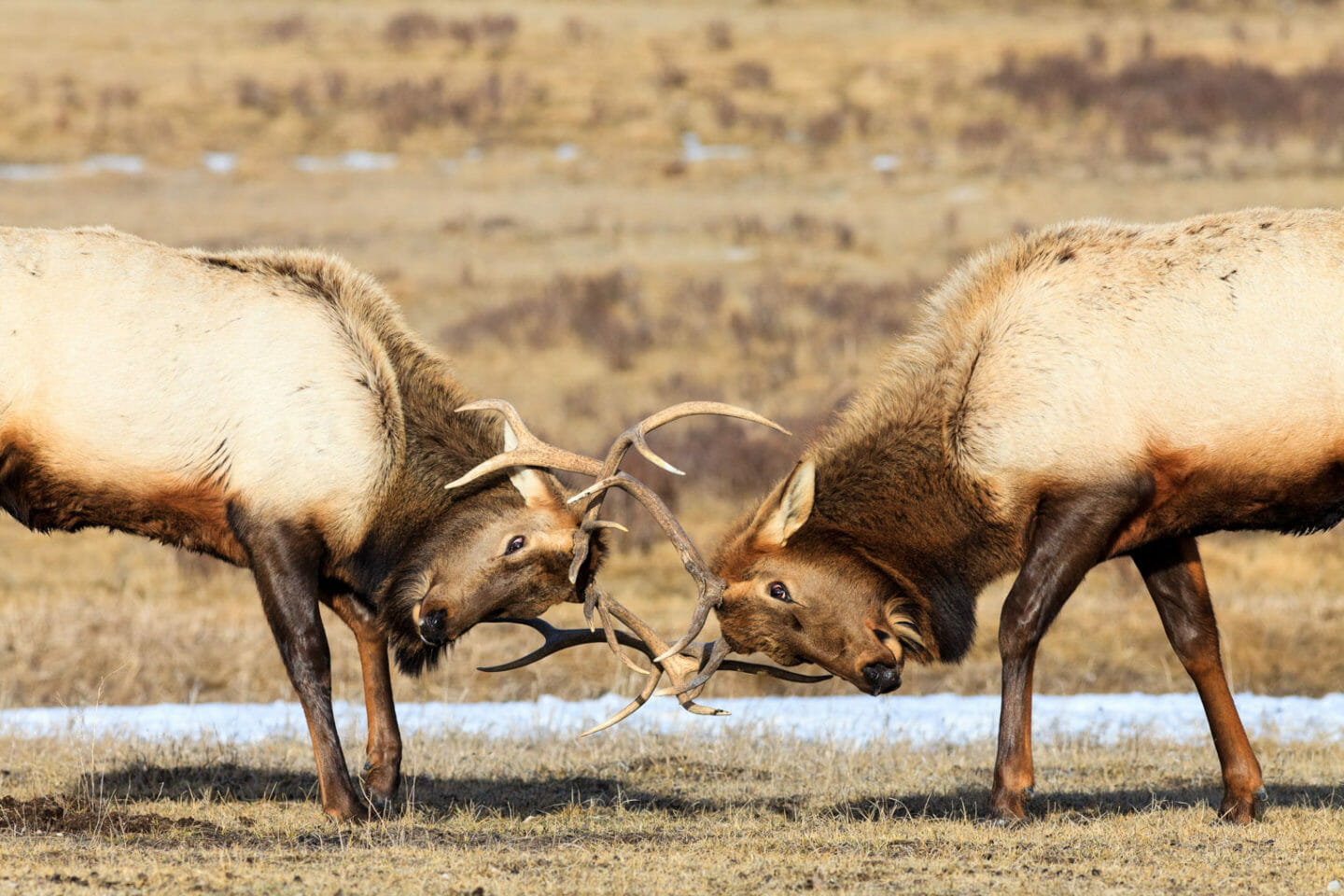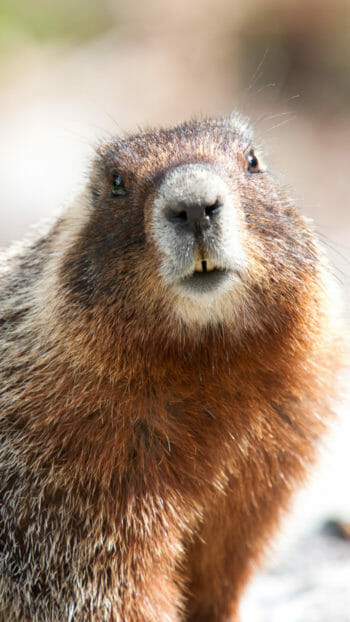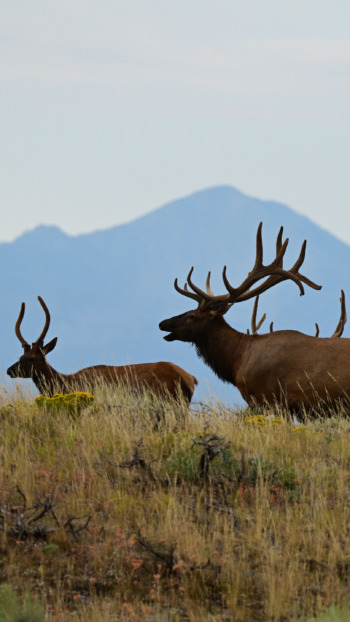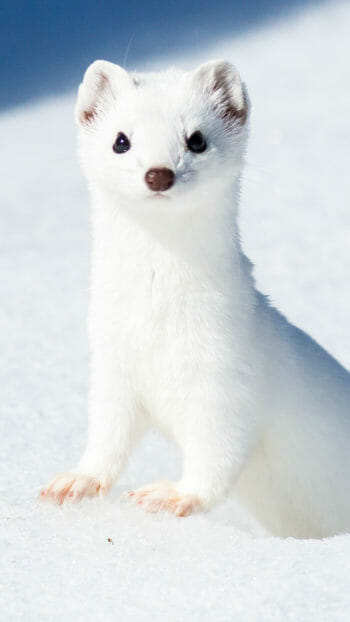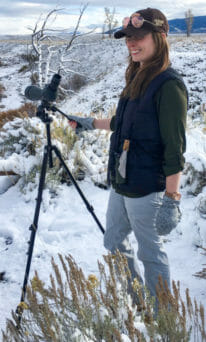The Greater Yellowstone Ecosystem (GYE) is home to an impressive list of charismatic megafauna, both predator and prey species. A trip to Yellowstone or Grand Teton National Parks is sure to provide encounters with wildlife that you’ve only seen in nature documentaries. The elk (Cervus canadensis) is a species native to North America and is one of “The Big 5” of the ecosystem. The rest of the list includes bear, wolf, moose, and bison. These are generally the most sought after species for visitors to spot!
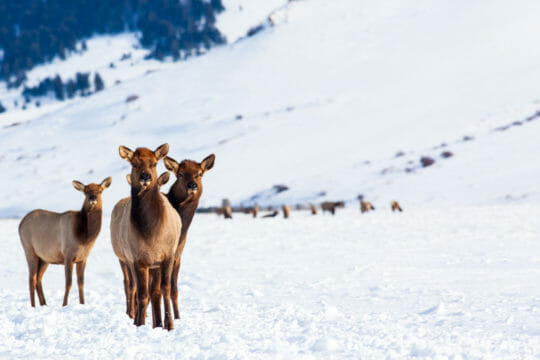
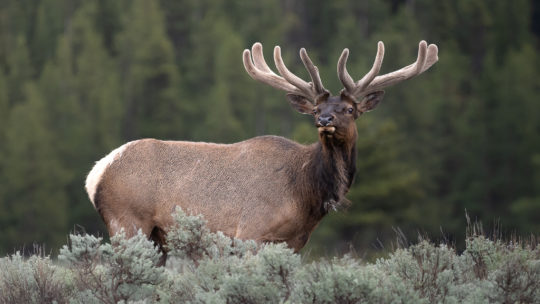
Elk in Jackson Hole
An icon of the American West, elk are the second largest deer species, after the moose. They are one of the largest terrestrial animals in North America. As herd animals, they are often seen in great numbers, particularly in the spring and fall during their seasonal migrations. They spend their time in open forests or grazing by tree lines in forest-edge habitats.
In the winter months they can be found in the thousands on the National Elk Refuge. Starting in April, they begin to return north, spreading out to their summering grounds throughout Jackson Hole and even as far as Yellowstone! It is very important to abide by speed limits and stay aware at this time; herds often cross the roads throughout the park on their way. During the height of summer, they are more difficult to find as they seek reprieve from the heat in shady forests and higher elevations. The fall months see a return of frequent elk sightings as it is the start of the elk rut.
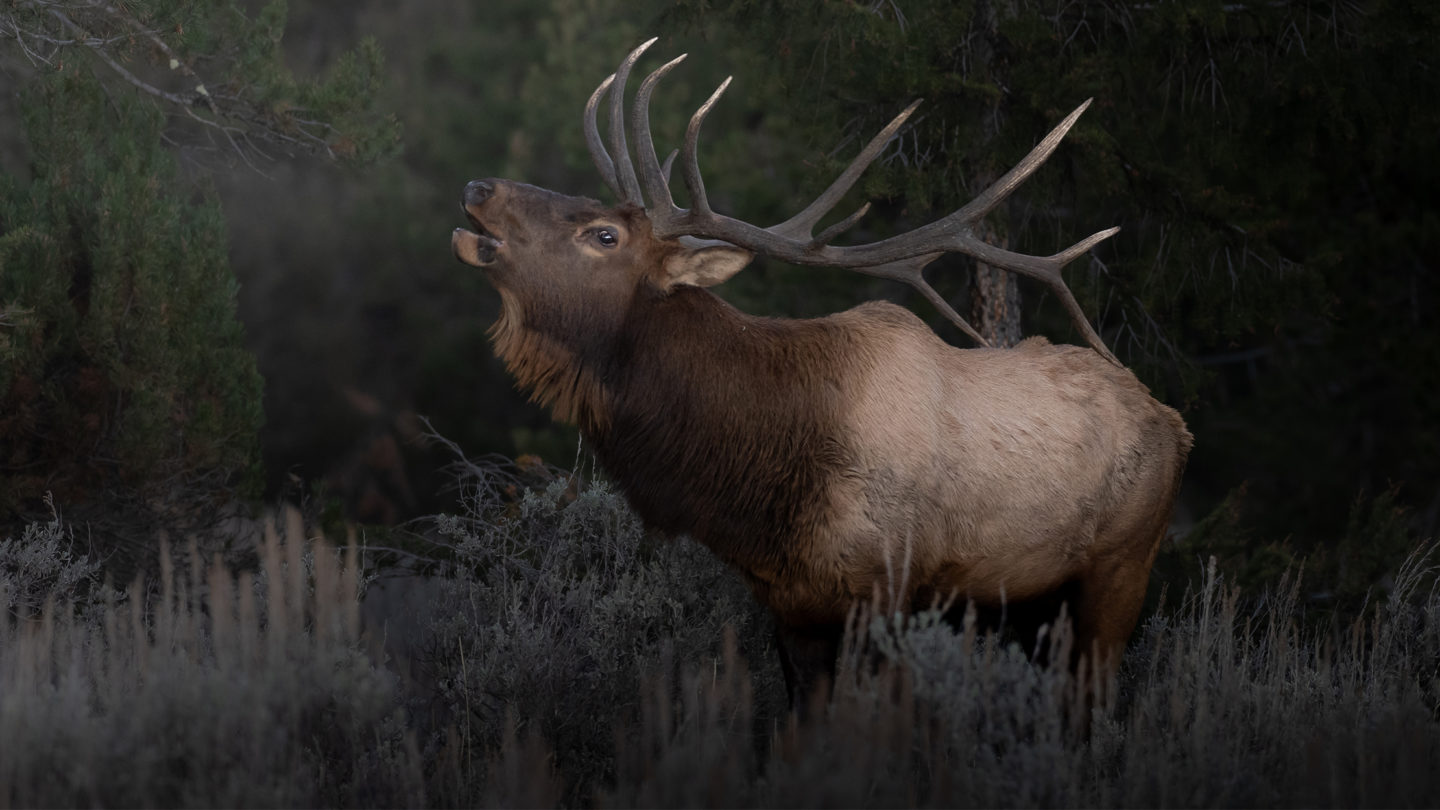
Elk Rut
The elk rut is the elk’s mating season. During this time, herds flood the valley once again and bull elk (males) are on full display. Their antlers are fully formed to their impressive size, and their trademark bugle is a delight to hear in the morning and evening hours. The fall elk rut is a special time to be in the park- the temperatures are cooling, the summer crowds are thinning, and the leaves are turning gold throughout the region. It’s a beautiful time in the GYE, and the soundtrack of bugling elk makes for a completely immersive experience. You might even get to witness a battle between rival bulls!
During the elk rut, you’ll see large groups of females (harem) with one large, dominant bull. This bull is responsible for breeding with all available females. You may see other, smaller bulls nearby, but they are not yet dominant enough to have their own harem. Instead, they are trying to sneak in when the dominant bull is distracted. Sometimes, another large bull will come in and challenge for the rights to the harem, possibly resulting in a violent fight. The bugling is a dominant display by the bulls- it is a way to show off to the females and challenge other nearby males.
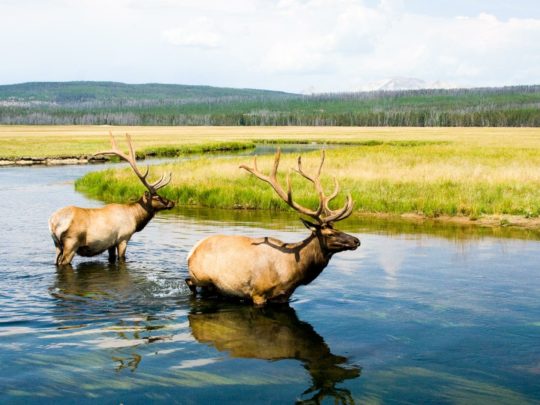
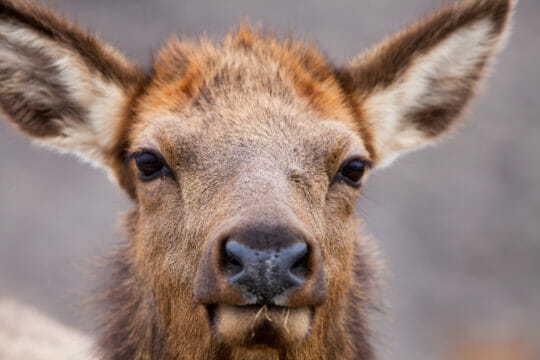
How to See Elk
Throughout the rut, early morning and evening hours are the best times to encounter elk. Keep a sharp eye out around open fields by tree lines. You’ll be able to observe them grazing while the bull elk patrols the herd and bugles, keeping other males away. Open areas near rivers are also a good place to look, and on hillsides with few trees. Binoculars and spotting scopes are excellent tools to have with you to search the landscape.
One of the best ways to find and observe elk is to book a guided tour! Embarking on a full day Grand Teton National Park tour with us will get you out into the park at dawn, prime time for wildlife movement. In the fall, during the elk rut, it’s extra fun to search for elk as you can pause and listen for the bugles! Following an exciting morning of elk watching, you’ll have an action packed day exploring the rest of the park and enjoying a delicious picnic lunch at a scenic spot. There are many, many other species of wildlife in Grand Teton, so while you’re watching elk, you never know what else you might come across! If you’re tight on time, we also offer a half day tour which you can join either in the morning or the evening.

Best Time of Year to Visit Jackson Hole
If you have flexibility on what time of year to visit Jackson Hole, it’s worth it to investigate what each season has to offer. Depending on your personal interests, you may prefer one over the other. Springtime is bursting with new life and active wildlife. Summertime sees warmer temperatures, meaning the animals are moving less, but hiking is wonderful and the wildflowers are in full bloom! The bison rut also takes off mid summer, truly a sight to see. As mentioned before, the fall months are when the elk rut occurs, but also other animals like moose, mule deer, and pronghorn antelope. Winter provides excellent elk encounters on the National Elk Refuge- you may take a horse drawn sleigh that takes you up close to the herds that spend the cold season here. There is so much to see in this wondrous landscape that no matter when you visit, we recommend spending 5-7 days here to truly take it all in!
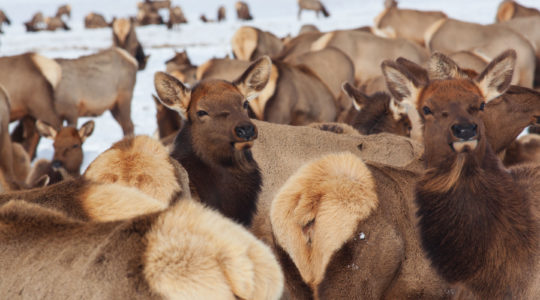

How To Get There
Traveling to Jackson Hole is as easy as can be- the Jackson Hole Airport is located within the boundaries of Grand Teton National Park, only 15 minutes from downtown Jackson. It is the only airport located completely within a national park! If you are driving, there are several routes that lead to Jackson. Whether you are coming from the north, south, east, or west, if you are on a road trip and journeying by car or RV, you’ll have options. It is important when traveling the roads to be aware of the seasonal weather as winter weather can be fairly unpredictable in the spring and fall. Make sure you check ahead of time on the road conditions for the route you plan to take, and be prepared for mountain driving coming from the west or the north.
If you are able to extend your stay beyond a couple of days, we highly recommend a multi-day tour! We offer a 2-day and 3-day tour that explores both Grand Teton and Yellowstone National Parks, and a specialized 3-day photography tour in Grand Teton. We can explore at a slower pace, visiting more natural wonders and spending more time taking in the scenery. Whether you are a photography buff or simply wish to sightsee in a stress-free way, our customizable tours are the way to go!
Wildlife tours are extremely popular, especially in the summer months. If a guided tour is something that you and your family are interested in, we encourage you to book ahead to secure your adventure with us. The trip of a lifetime is waiting for you!
FAQs
When is the best time to see elk in the Greater Yellowstone Ecosystem?
Elk can be seen year-round, but the most exciting viewing happens during the fall rut in September and early October. This is when bull elk are most active, bugling to attract females and challenge rival males. In winter, thousands gather on the National Elk Refuge, offering excellent viewing opportunities from sleigh rides.
What is the elk rut, and why is it special to witness?
The elk rut is the species’ mating season, typically occurring in the fall. Bull elk showcase their dominance with impressive antlers, dramatic bugling calls, and sometimes head-to-head battles. It’s one of the most memorable wildlife spectacles in Grand Teton and Yellowstone National Parks.
Where are the best places to spot elk in Grand Teton National Park?
During the rut, look for elk in open fields near tree lines, riverbanks, and hillsides with sparse trees. Early morning and evening hours are best for sightings. In winter, the National Elk Refuge near Jackson provides close encounters with large herds.
Do I need special equipment to watch elk?
While you can see elk with the naked eye, binoculars or a spotting scope greatly enhance the experience, allowing you to observe their behavior from a safe distance. A camera with a zoom lens is also ideal for capturing these moments. Our tours provide high-quality binoculars and scopes for an excellent elk-watching experience!
Are guided tours a good way to see elk and other wildlife?
Absolutely! Guided tours give you access to local expertise, prime viewing locations, and the best times of day to spot wildlife. During the fall rut, guides often locate elk by listening for their bugles at dawn and dusk. Plus, you’ll have opportunities to see many other species along the way.
What other wildlife might I see on an elk-focused tour?
While searching for elk, it’s common to encounter other members of the “Big 5” in the Greater Yellowstone Ecosystem—bison, moose, wolves, and bears—as well as pronghorn, mule deer, eagles, and other fascinating species. Every day in the field brings new surprises.

